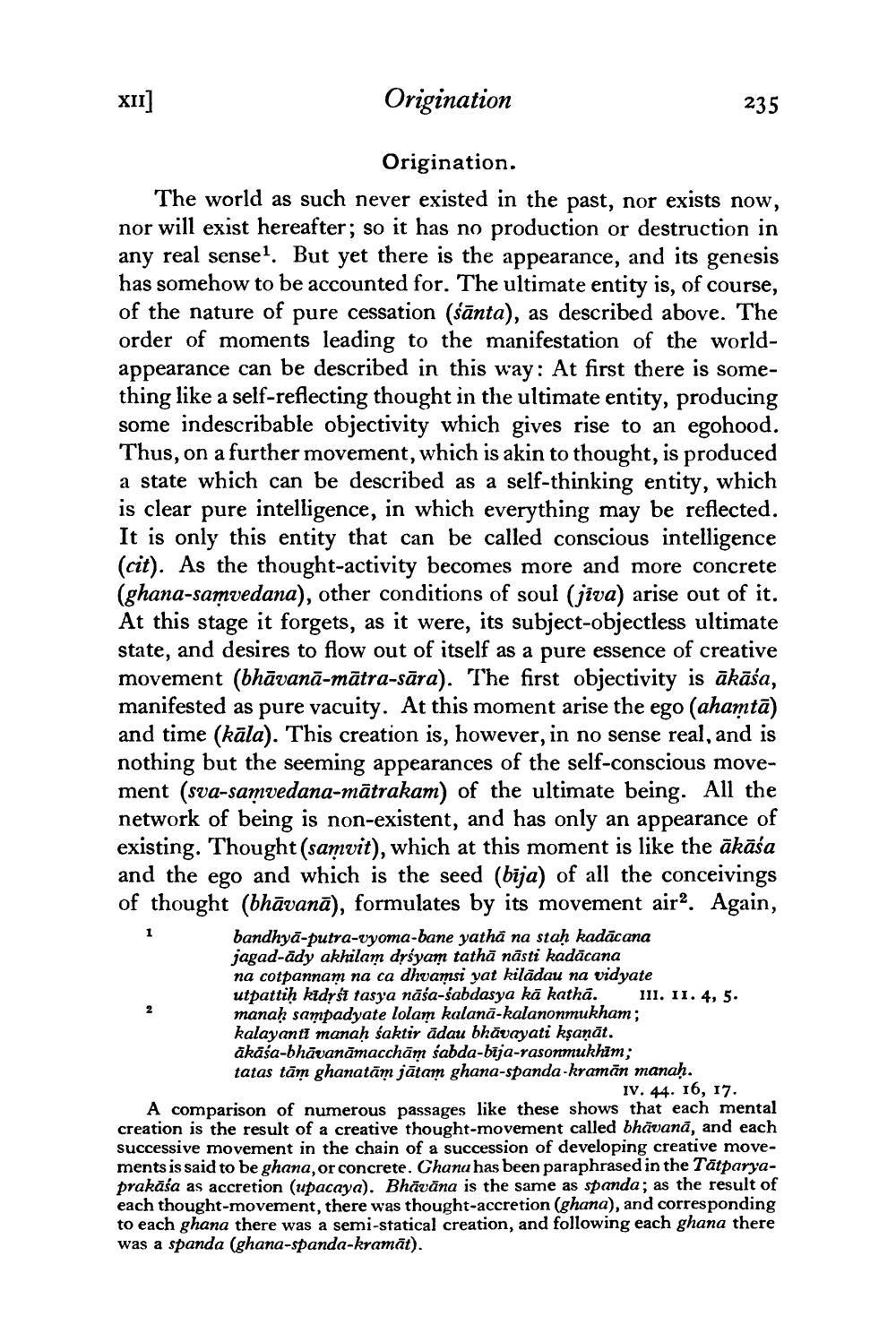________________
XII]
Origination
235
Origination. The world as such never existed in the past, nor exists now, nor will exist hereafter; so it has no production or destruction in any real sensel. But yet there is the appearance, and its genesis has somehow to be accounted for. The ultimate entity is, of course, of the nature of pure cessation (śānta), as described above. The order of moments leading to the manifestation of the worldappearance can be described in this way: At first there is something like a self-reflecting thought in the ultimate entity, producing some indescribable objectivity which gives rise to an egohood. Thus, on a further movement, which is akin to thought, is produced a state which can be described as a self-thinking entity, which is clear pure intelligence, in which everything may be reflected. It is only this entity that can be called conscious intelligence (cit). As the thought-activity becomes more and more concrete (ghana-samvedana), other conditions of soul (jiva) arise out of it. At this stage it forgets, as it were, its subject-objectless ultimate state, and desires to flow out of itself as a pure essence of creative movement (bhāvanā-mātra-sāra). The first objectivity is ākāśa, manifested as pure vacuity. At this moment arise the ego (ahamtā) and time (kāla). This creation is, however, in no sense real, and is nothing but the seeming appearances of the self-conscious movement (sva-samvedana-mātrakam) of the ultimate being. All the network of being is non-existent, and has only an appearance of existing. Thought(samvit), which at this moment is like the ākāśa and the ego and which is the seed (bija) of all the conceivings of thought (bhāvanā), formulates by its movement airo. Again,
bandhya-putra-vyoma-bane yatha na stah kadācana jagad-ādy akhilam drśyam tathā nästi kadäcana na cotpannam na ca dhvamsi yat kiladau na vidyate utpattiḥ kidrst tasya nāśa-sabdasya kā katha. 111. 11. 4, 5. manah sampadyate lolam kalanā-kalanonmukham; kalayanti manaḥ śaktir ādau bhāvayati kşaņāt. ākāśa-bhāvanāmacchām sabda-bija-rasonmukhim; tatas tām ghanatām jātam ghana-spanda-kramān manah.
IV. 44. 16, 17. A comparison of numerous passages like these shows that each mental creation is the result of a creative thought-movement called bhāvanā, and each successive movement in the chain of a succession of developing creative movements is said to be ghana, or concrete. Ghana has been paraphrased in the Tātparyaprakāśa as accretion (upacaya). Bhāvāna is the same as spanda; as the result of each thought-movement, there was thought-accretion (ghana), and corresponding to each ghana there was a semi-statical creation, and following each ghana there was a spanda (ghana-spanda-kramāt).




